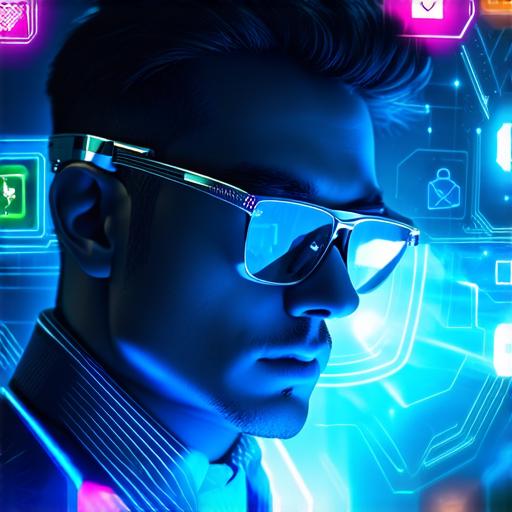What is Augmented Reality?
Augmented reality is a technology that overlays digital information onto the real world. This allows users to see virtual objects and information in their physical environment, creating an enhanced version of reality. AR can be used in a variety of applications, including gaming, education, and retail. For example, IKEA’s AR app allows users to see how furniture would look in their home before making a purchase, while Pokemon Go uses AR to bring digital creatures into the real world.
What is Virtual Reality?
Virtual reality is a technology that creates a fully immersive experience for users. It involves wearing a headset or other device that blocks out the real world and replaces it with a virtual environment. VR can be used in gaming, entertainment, and education. For example, Oculus’s VR headset allows users to enter a virtual world and interact with characters and objects within it.
What is Mixed Reality?
Mixed reality is a technology that combines the best of AR and VR, creating a seamless blend of real and digital worlds. MR can be used in a variety of applications, including gaming, education, and healthcare. For example, Microsoft’s HoloLens allows users to see holographic objects in their physical environment, while Google’s Daydream View allows users to enter a virtual world while still being able to interact with the real world around them.
Case Studies:
One example of how AR, VR, and MR are being used in the gaming industry is through the creation of interactive video games. For example, Nintendo’s Pokemon Go uses AR to bring digital creatures into the real world, allowing users to interact with them as if they were real. Another example is Epic Games’ Fortnite, which uses AR to create a virtual world that players can enter and interact with.
In the education sector, AR, VR, and MR are being used to enhance learning experiences. For example, Anatomy 4D uses VR to teach students about the human body, allowing them to explore different parts of the body in a fully immersive environment. AR is also being used in education to create interactive textbooks that allow students to learn in a more engaging way.
In healthcare, AR, VR, and MR are being used to improve patient outcomes and reduce costs. For example, AR can be used to assist surgeons during procedures, allowing them to see real-time information about the patient’s anatomy. VR is also being used in therapy to treat conditions such as PTSD and anxiety disorders by creating a safe and controlled environment for patients to confront their fears.
Comparisons:
AR, VR, and MR each have unique characteristics that set them apart from one another. AR is best suited for applications where users need to see virtual objects in their physical environment, while VR is best suited for applications where users need to be fully immersed in a virtual world. MR is best suited for applications where users need a seamless blend of real and digital worlds.
AR and VR both have the potential to be used in a variety of industries, but they are often associated with gaming and entertainment. MR, on the other hand, has the potential to be used in healthcare, education, and other industries where a seamless blend of real and digital worlds is needed.
FAQs:
1. What is the difference between AR, VR, and MR?
AR overlays digital information onto the real world, VR creates a fully immersive experience for users, and MR combines the best of AR and VR to create a seamless blend of real and digital worlds.
2. How are AR, VR, and MR being used in different industries?
AR is being used in gaming, education, and retail; VR is being used in gaming, entertainment, and education; and MR is being used in gaming, education, and healthcare.

3. What are some examples of how AR, VR, and MR are being used in real-life applications?
Pokemon Go uses AR to bring digital creatures into the real world, Oculus’s VR headset allows users to enter a virtual world, and Microsoft’s HoloLens allows users to see holographic objects in their physical environment.
4. What are the potential benefits of using AR, VR, and MR in different industries?
AR can enhance learning experiences in education, VR can improve patient outcomes in healthcare, and MR can reduce costs in healthcare and other industries.
5. What are some challenges associated with using AR, VR, and MR in different industries?
One challenge is the high cost of the technology, which may make it difficult for smaller businesses to implement these technologies. Another challenge is the need for specialized training to use these technologies effectively.
Summary:
In conclusion, AR, VR, and MR are each unique technologies that have distinct characteristics. As an AR developer, it is important to understand the differences between these technologies and how they can be used to create immersive experiences for users. Whether you are a gamer, educator, or healthcare professional, AR, VR, and MR have the potential to revolutionize the way we interact with technology and the world around us. As these technologies continue to evolve, we can expect to see even more innovative uses of AR, VR, and MR in the future.
